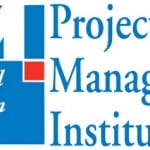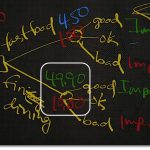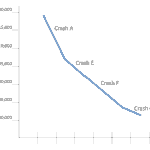Mental Sprint and Recover by Steven Fullmer PMP
Mental Sprint and Recover by Steven Fullmer PMP
Mind you, I studied neurochemistry, but am not a practicing neuroscientist. I do however actively study leadership and productivity, and have done so for more than 30 years. During that time I have continually monitored advances in our understanding of brain science. Perhaps the most asked question during and after my Understanding the Mind webinar is: how much of a break is needed following a 90 minute focus period?
Somewhere between 30 minutes and four to five hours. (I just couldn’t bring myself to type ‘it depends’. There now I did it anyway.)
Doesn’t help much when you are planning your day if you can’t track your recovery periods as well as the three focused efforts. So the question is a great one.
The answer has more to do with the biological pattern you create for yourself. Although researchers aren’t exactly certain why, the human biorhythm clock is longer than 24 hours. The standard answer is 25 hours, although a Harvard archive: Human Biological Clock Set Back an Hour suggests is might be as low as 24 hours and 11 minutes. Note: the article by the Harvard Gazette has been republished across the last decade by other sources as the definitive answer, although there are many other studies that resulted in the 25 hour assessment. Most had to do with isolating the subject in total darkness without any external cues and monitoring the cycles that result. Either way, the human ‘circadian’ rhythm is slightly longer than the 24 hour rotation of the earth. All bio-organisms adjust to the rhythms of the earth based on external stimuli, called Zeitgebers (or time givers). Exposure to sun or light, the dimming of light and onset of darkness, thermal conditions like extreme heat or cold are examples of Zeitgebers. Humans react to these natural stimuli, as well as artificial ones like alarm clocks. Our bodies rely on patterns for our chemistry to correctly cycle and recover. Break the pattern and we must re-adjust. In other words, recover the cycle. This is the reason for ‘jet lag’. You either need to start a new cycle before you travel, or adjust when you arrive.
Readjusting our daily rhythm may require two or three days once we significantly break the pattern. Pull an ‘all-nighter’. Stay out late for that party or up late preparing that report. Sleep late to get rid of a cold or flu. The cycle is thrown off, and it will take a few days to re-establish.
Our daily schedules are affected by the pattern as well. And they actually start and end with our sleep patterns. Well, at least a significant component of the ‘time to recover’ answer derives from our sleep patterns.
Consistency becomes the key.
Let me attempt to explain – and provide you references so you can start some of your own research.
I continue to believe that you should read Daniel Levitin’s book, The Organized Mind. He offers 400 pages of medically based insight followed by 150 pages of annotation and references. The book is pithy. It may provide you a resource to discover your own patterns over time.
Everyone wants a shorter, faster answer. Here is my attempt.
Leo Widrich offers a great overview blog, HowMuch Sleep Do we Really Need to Work Productively?
Or you can look into National Sleep Foundation reports like How much Sleep do We Really Need?
The answer is once again “it depends”. Though for most working adults, ages 18-64 years, the number is between 7 and 9 hours, though neither less than 6 nor more than 10.
Studies show that our early sleep cycle is extensively dedicated to 90 minutes of nREM (non-Rapid Eye Motion) sleep processing all of the day’s experiences and thoughts. Effectively replaying them and chunking them into independent ‘bits’. We then drop into a very deep state as the brain releases chemicals that ‘freeze’ body motion. During this aspect of the cycle we accelerate the regeneration of the biochemicals on which the brain and body operate. As this state continues, we drop extensively into REM (Rapid-Eye-Motion) for about another 90 minutes during which we assimilate all the bits into memory as well as associate the bits with other memories. Neuro-research technologies are just entering the era where brain maps are able to identify and compare the neurons involved in each of these stages. Sleep disruption during any of these stages results in different effects on our ability to focus, to remember, to creatively solve problems, or effectively to recover during subsequent waking cycles. Add the three stages together and we need at least five hours plus some transition periods to get through the required cycle. Five hours still isn’t enough though. Historical human sleep cycles included an hour or two where we were awake between the nREM and REM periods, either before or after the chemical refresh. (Getting up in the middle of the night for a drink of water, a snack or to relieve yourself is a natural part of achieving chemical balance.)
The brain is effectively the same as a muscle from a biochemical perspective. It needs to be exercised to be developed, given a physical recovery cycle, and atrophies if it is not used regularly and consistently. Over exertion can be achieved for temporary periods, using the same hormones that enable the fight or flight mechanism. Once the body’s high grade rocket fuel is burned out, the body needs at least four to six hours to rebalance. Leo Widrich’s article (above) highlights the affect of getting insufficient sleep or sleep deprivation. You can use the chemicals currently available for the brain, like pushing yourself into a short sprinting run. When the current supply is depleted, it becomes impossible to regain focus. Mental performance declines, and you won’t notice the result.
You can use muscle memory – or actual memory and brain processing power – only until the biochemicals are depleted. Automated efforts use different chemical sets.
The food we eat, the amount of water we drink, the exercise we do (or don’t), and the exposure to intense external exposure all affect our ability to create and cycle the necessary biochemicals. Watching a bright television or computer monitor (or the screen on our smart phone) before going to bed is a Zeitgeber that starts our sleep cycle off-kilter. The subsequent sleep cycle will not be ‘natural’ and the amount of required sleep is probably greater to re-balance.
Let’s assume that you create good sleep preparation habits, and get to bed within the same hour every night. Then what will your recovery period after focused effort look like during the day?
I will not profess to have a singular answer. My reading does reveal some consistent patterns, however. We need to take specific actions during recovery periods in order to affect optimal results.
One such option is a 20 minute nap. This signals the body to cycle and refresh biochemicals without entering the thought chunking mode. We end up with more of the chemicals we need to focus creatively. There are multiple studies suggesting 20 minute periods of exercise, meditation, eating, napping, or other activities create significant biological benefits. Biphasic sleep consists of one lengthily sleep period (typically at night) and one 20 minute nap. The Polyphasic Society studies and advocates equidistant naps spread throughout the day – one 3.5 base period (to take care of the nREM/REM needs) and three 20 periods spread equally across the remainder of the day. The time of the core sleep is critical to successfully implementing a polyphasic approach – it must take into account natural circadian rhythms and the effect of natural Zeitgebers (like sunrise).
The reality in our technology and project oriented world is constant distraction. Fast switching being forced upon us by the environment in which we work and interact. Our biochemistry cannot handle more than about 30 minutes of fast switching before we burn out the chemicals and they need to be refreshed. Constant or recurring fast switching throws the entire chemical balance off. And the balance has to be re-established.
One of the webinar attendees asked if our children’s generation will learn to better handle fast-switching? Perhaps, but only within the limits of the human organism, and at a performance cost. The results of Clifford Nass’ work at Stanford University suggest that fast switching kills concentration and creativity. For a simplified over view, check out the NPR article.
Our bodies create biochemicals. Some are specific in nature, while others have broad biological application. Deplete a supply of any biochemical and symptoms arise until the supply or balance is restored.
Being refreshed requires the fuel (food) precursors that turn into the needed biochemicals, the water to transport the nutrients and remove the waste, and the exercise to maintain appropriate blood flow and balanced body chemistry. Recent fitness studies are showing that 30 minutes of sprint-recover exercise actually burns more fat and generates better health than extended workout periods. The debate between high intensity interval training (HIIT) and continuous endurance training continues. Results strongly suggest that HIIT results are equal or better than extended efforts.
Having been a cross-country runner, I recall well the build-up required to prepare for long races. Marathoners talk about hitting ‘the wall’. The wall is effectively onset glycogen depletion. The body has to be prepared, over a long period of time, to retain the biochemicals necessary for sustained performance. When the chemicals are depleted, the body either ‘crashes’ or finds an alternate fuel source. The subsequent recovery period can be extensive. Only runners who consistently prepare train their bodies to handle such extreme exertion.
Focusing the brain requires the same type of preparation and exercise.
Most of us don’t prepare for grueling mental marathons. Our standard cycle is prepared to handle three 90 minute periods per day, interspersed with mental rest (nap, meditation), biochemical recovery (eating, drinking water, bio-breaks), and circulation of the new chemical stores (digestion, exercise).
So my analysis for recovery between 90 minute focus sessions is – ‘it depends’.
It depends on how well you establish a 24 (okay 25) hour cycle that includes patterned sleep, eating, exercise, meditation/rest, and work. Don’t forget that humans require social interaction to generate essential endorphins, and exposure to sunlight and nature to generate naturally occurring vitamins (like D3). In our technological society we need to limit fast switching activities (like email, texting, social media, television, news programs, etc,) to short, fixed periods of time so as not to overtax the related neurochemicals.
Set up your schedule and stick to it regularly, and you are likely to achieve shorter, predictable recovery stages. Constantly alter your schedule; limit your sleep, rest, and exercise; vary the timing of critical recovery efforts from day to day; or allow yourself to be interrupt driven. In any of the latter instances, you can expect the recovery periods to be longer, or even find yourself in a perpetual state of low performance. Use your physical and mental systems in the way that nature designed them, and you will excel daily. You will also likely have the reserves you need to push yourself when you need to be ‘in the zone’, or to respond to unexpected risk.
Success experts expound on strongly defending your daily and weekly calendar, and maintaining a goals list to assure that only true priorities make it to your calendar. The weeks that I am in the classroom teaching require a very different physical presence and demand compared to the weeks where I am able to schedule and control my time. The latter weeks are far more ‘productive’ in terms of creativity and forward progress. This blog took only two ninety minute periods to research, write, and edit. Separated by lunch with my wife, assisting with a minor work assignment, a short walk around the neighborhood, and spending just 15 minutes to answer a few emails.
For the past four months I have been adhering to a daily schedule the parallels the following example.
| Calendar activity | Duration | End time |
| Awaken | 30 | 6:00 |
| Focus | 90 | 7:30 |
| Exercise/Walk dog | 30 | 8:00 |
| Eat/clean/dress | 30 | 8:30 |
| Travel to office/audio book | 30 | 9:00 |
| Review calendar/email | 30 | 9:30 |
| Focus | 90 | 11:00 |
| Clear desk/respond | 30 | 11:30 |
| Lunch/social | 60 | 12:30 |
| Exercise/walk (reflect on goals) | 30 | 1:00 |
| Creativity/meditation | 30 | 1:30 |
| Interrupts | 30 | 2:00 |
| Focus/nap | 90 | 3:30 |
| Review/update notes | 30 | 4:00 |
| Closing tasks | 30 | 4:30 |
| Buffer | 30 | 5:00 |
| Travel home/errands | 60 | 6:00 |
| Dinner | 60 | 7:00 |
| Focus/social | 90 | 8:30 |
| Exercise | 30 | 9:00 |
| Sleep prep | 30 |
I placed four 90 minute periods in my day, expecting to achieve only 3 of them given outside demands. I tend to know which days have such demands, so I know the week’s calendar in advance. I discovered that the recovery period toward focus tends to increase as the day progresses, so I built longer recovery cycles later in the day. When I teach or violate the cycle, I discover that it takes a few days to get back into the cycle. Once in the cycle, productivity appears to accelerate.
If I try to jump back into focus too soon, my ability to concentrate is harder to achieve and easily broken. If I actually follow my ‘recovery’ plan then the evening focus session is as productive as any other during the day. If I fail to ‘recover’, then the evening session is nearly impossible to complete.
As recommended by one of my mentors, I actually set a clock (an external Zeitgeber). The time in the focus period flies by and the results flow. It also reduces the tendency toward distraction. When I complete a set task within the 90 minutes, the endorphins associated with achievement kick in. I notice the difference. The ensuing recovery period is much shorter. But it took a few weeks to develop the habits and the patterns. And it does not take much to disrupt the cycle so that it has to be recreated.
How long does it take to recover – all depends on the patterns you create for yourself. And if you are a leader, it depends upon the environment you create for your team.
I look forward to seeing you in the classroom, or online!
Steven Fullmer
Interface Technical Training Staff Instructor
Steve teaches PMP: Project Management Fundamentals and Professional Certification, Windows 7, Windows 8.1 and CompTIA classes in Phoenix, Arizona.
You May Also Like
biorhythm, circadian, efficiency, fast-switching, high intensity interval training, HIIT, how much sleep do we need, leadership, neurotransmitters, organized mind, Productivity, Project Management, Recovery, schedules, sleep cycles, sprint and recover, Understanding the Mind, Zeitgeber
A Simple Introduction to Cisco CML2
0 3901 0Mark Jacob, Cisco Instructor, presents an introduction to Cisco Modeling Labs 2.0 or CML2.0, an upgrade to Cisco’s VIRL Personal Edition. Mark demonstrates Terminal Emulator access to console, as well as console access from within the CML2.0 product. Hello, I’m Mark Jacob, a Cisco Instructor and Network Instructor at Interface Technical Training. I’ve been using … Continue reading A Simple Introduction to Cisco CML2
Creating Dynamic DNS in Network Environments
0 645 1This content is from our CompTIA Network + Video Certification Training Course. Start training today! In this video, CompTIA Network + instructor Rick Trader teaches how to create Dynamic DNS zones in Network Environments. Video Transcription: Now that we’ve installed DNS, we’ve created our DNS zones, the next step is now, how do we produce those … Continue reading Creating Dynamic DNS in Network Environments
Cable Testers and How to Use them in Network Environments
0 732 1This content is from our CompTIA Network + Video Certification Training Course. Start training today! In this video, CompTIA Network + instructor Rick Trader demonstrates how to use cable testers in network environments. Let’s look at some tools that we can use to test our different cables in our environment. Cable Testers Properly Wired Connectivity … Continue reading Cable Testers and How to Use them in Network Environments




